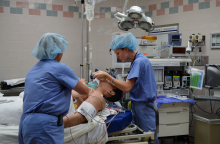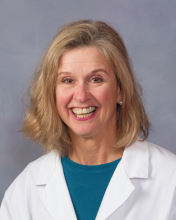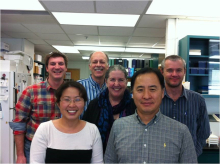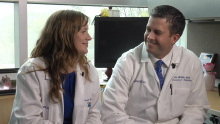Hahn, Mays and Talbert Named Associate Directors for UK Center for Health Services Research
UK Behavioral Researcher Conducts Attorney General's State Domestic Violence Homicide Report
Expo Gives Close-Up Look at State-of-the-Art Robots and Simulators Used for Medical Training
'UK at the Half' Talks to Director of Health Services Research
Dr. Mark Williams, professor and vice chair of internal medicine and director of the Center for Health Services Research at the University of Kentucky, was featured during "UK at the Half" that aired during the UK vs. University of Georgia football game, broadcast on the radio Nov. 8.
Sanders-Brown Center on Aging Announces its 2014 "Senior Stars"
SRAS Announces Holiday Schedule
The Sponsored Research Administrative Services office will observe the official University holiday schedule and will be closed as follows:
Thursday, November 27, 2014 and Friday, November 28, 2014;
and Thursday, December 25, 2014, through January 2, 2015 (reopening Monday, January, 5, 2015).
The Office of Sponsored Projects Administration (OSPA) will also observe these holidays. If you will require proposal assistance during these times, please make advance arrangements with your GPS.
Dr. Barbara Phillips Named CHEST President-Elect
UK Researcher Leads Global Team of Scientists Exploring the Processes that Propel Ovulation
Southern KY AHEC hosts 1st Preceptor Development Workshop
On Oct. 2, 2014, Southern KY AHEC hosted its first preceptor development workshop. Providers from the Tri-County area were invited to London to attend Efficient Precepting: Time Management and Medical Records Documentation for Community Teaching Physicians to help answer questions like:
Couple Balances Teaching, Healing & Parenting
University of Kentucky College of Medicine assistant professors Dr. Angela Korrect Webb, and her husband, Dr. Jonathan Webb, have ties to the University of Kentucky that go back to when they first began dating during their college years.
While attending Belmont University, Angela, a Nashville native, searched for the perfect shirt to give Jonathan for his birthday. When his roommate let her into their dorm room to see what color was missing from Jonathan's closet, it quickly became clear to her what she should choose.






